Graffiti defiles the exterior of the Japanese American National Museum in Little Tokyo
in the aftermath of the nearby ICE protests that took place in downtown Los Angeles. (Photo: George Toshio Johnston)
ICE raids ignite protests in Downtown Los Angeles; historic Little Tokyo vandalized.
By Athena Mari Asklipiadis, P.C. Contributor
With surges of Immigration and Customs Enforcement (ICE) raids gripping Los Angeles, protesters began filling downtown streets earlier this month. One area of Downtown Los Angeles largely impacted due to sheer proximity has been historic Little Tokyo. With police perimeters pushing protesters away from the Federal Building and the immigration detention center there, people came face to face with geared up officers who were ready for confrontation.
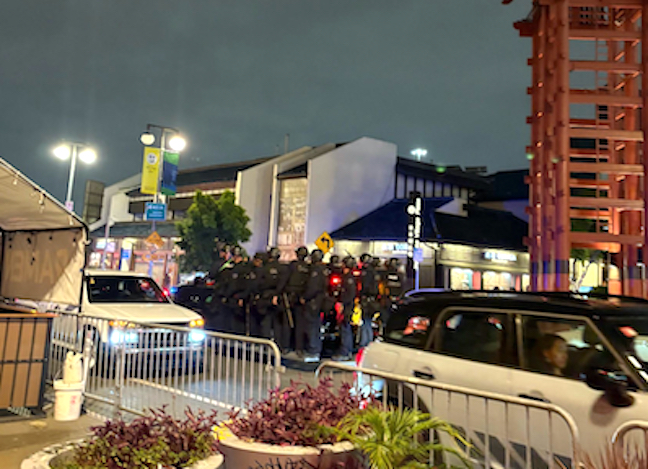
LAPD officers in riot gear arrive on-scene on June 6 in Little Tokyo. (Photo: Athena Mari Asklipiadis)
On June 6 on First and Alameda streets, the peaceful protest began small that evening. Ironically, 80 years ago, Japanese Americans assembled one street over on First Street and Central Avenue at the site of a “Civil Control Station” to board busses that would transport them to incarceration camps in 1942 after President Franklin D. Roosevelt signed Executive Order 9066 during World War II.

Protests outside of the Federal Building in Downtown Los Angeles (Photo: Josue Perez)
What began peacefully changed quickly as the city’s police presence intensified. The crowd became agitated with the exaggerated police response and sirens. The number of officers grew to four or more times greater than the number of protesters, and soon, helicopters started circling the downtown area. Patrons from Far Bar on First Street spilled out into the street trying to understand the commotion. Tactical police vehicles with swarms of officers standing on the vehicles’ running boards flew down the streets of L.A.
Angry Little Tokyo visitors who left their food and drinks on tables behind them, stood on the sidewalk shouting things like, “You should be ashamed of yourselves” to the officers. And in response, over a loud speaker, an officer provoked by the crowd responded with “Show ’em what’s up, show ’em what the f*ck’s up.” Crowds of patrons gathered in shock, filming and repeating the officers’ words in disbelief. If the aim was to diffuse or disperse the crowd, the reaction and words of the Los Angeles Police Department officers only further angered everyone.
Soon, words became action, and some threw plastic bottles toward the officers. Teenagers climbed the side of the Japanese American National Museum and started to graffiti the wall. The crowd began chanting things like “La migra, la policía, la misma porquería” (translation: ICE (la migra) and police enforcement are the same garbage).
Josue Perez, who was a patron at Far Bar that evening, shared his feelings while seeing the protests and raids. “It makes me really sad and angry and somewhat scared,” he said. “It’s personal to me because my parents are immigrants from El Salvador, and I understand why people come to this country. What’s sad is to see officers of my same race, ‘la misma raza,’ beating protesters up. Cops are humans, just like us, but for them to take kids and separate families and for them to see people crying and not care — it’s just sad.”
When Perez saw young teens climbing the side of JANM to graffiti the building’s wall, that angered him, too. He and his girlfriend confronted the taggers, telling them to stop.
“I told them, ‘Come on guys, this is senseless, Japanese are immigrants, too,’ and they felt dumb, you could see remorse in their eyes, and they apologized,” he said. “One of the kids graffitiing was Asian, and that surprised me. I was like ‘You should know better.’”
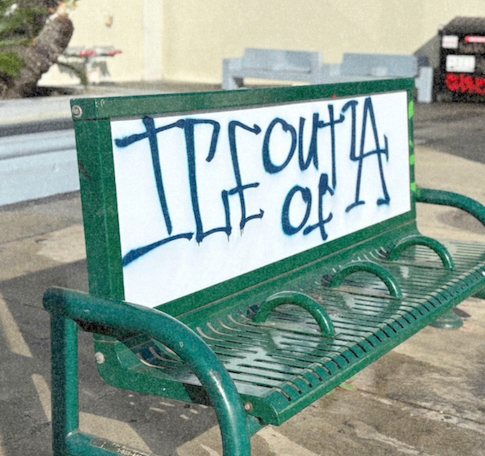
Anti-ICE messages in Little Tokyo (Photo: Athena Mari Asklipiadis)
By the next day, the graffiti multiplied, and by June 10, nearly every exterior wall of the museum was covered in anti-ICE and anti-Trump slogans. In fact, numerous businesses in Little Tokyo were riddled with graffiti and damaged. Businesses boarded up in anticipation of potential looting or damage.
The footage of the damage to JANM and other nearby buildings went viral on social media. It evoked various responses from the public. Some were angered that the news was shifting from the narrative of the ICE raid and protests to how Little Tokyo needed to be cleaned up, while others spoke out to defend the businesses there.
On June 12, a cleanup was organized by organizations like Little Tokyo Community Council and Little Tokyo Service Center, who gathered community members to scrub the area’s damaged sandstone walls. While the volunteers were applauded for cleaning up the graffiti, seeing highly criticized L.A. Mayor Karen Bass join in to help upset some social media commenters.
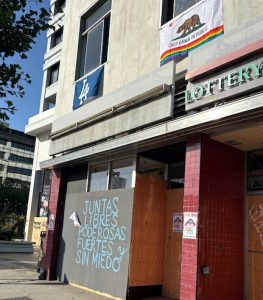
Boarded up businesses in Little Tokyo, with one containing the message: “Juantas libres, poderosas, fuertes y sin miedo.” Translated, it means: “Together we are free, powerful, strong and without fear.” (Photo: Athena Mari Asklipiadis)
“Can we please separate the photo op / hallow word / mayoral agenda / Karen Bass portion of this piece?” one user asked. Another social media user, Evelyn Tenorio, commented on a statement by JANM, saying, “I was at the protests yesterday, and on behalf of my community, I want to apologize. . . . After all the Japanese have historically gone through, that was not OK. I don’t support any of the destruction of property even in these times, but seeing the museum being tagged up really angered me. I’m so sorry. That’s not at all what the Latino community is about.
“I’m angered by the looting and destruction. There are a small portion of people who are taking advantage of the situation to personally gain from it. You don’t need to break a window to make a point. MLK and César Chávez did not do anything like that, and they created significant change on their terms,” Tenorio shared. “A small number of people attend these events not because they care about immigration policy but to create chaos by vandalizing and looting in ways that undermine what this is all about. While I do try to understand the anger that a lot of people feel, I still can’t find justification for the destruction of places or property. To me, one of the most effective forms of protest is where I put my money. I withdraw support from businesses that oppose my own values. . . . If you organize and disrupt profits, that does create big changes with anyone, regardless of their viewpoint.”
One of the Japanese Village Plaza businesses affected by the protests and curfew put in place is streetwear brand clothing store Japangeles, a local favorite. While owners Roy Kuroyanagi and wife Kristy Kim support the protests, they decided to close their store June 9-15 for the safety of their staff and patrons.
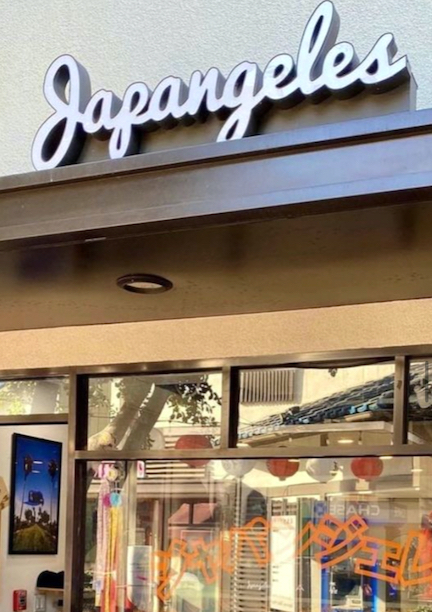
As a result, their closure meant a loss of sales that week, but despite that, they remained positive and supportive of the community and protests.
“We were optimistic, and when we saw footage of the people (members of the community) reprimanding those vandalizing Ootoro restaurant, we knew there were people amongst protesters that were a voice of reason to stop them from hitting Little Tokyo even worse,” said Kuroyanagi.
Kuroyanagi and Kim also highlighted the sentiment many Japanese Americans share, that “history is repeating itself,” referring to the racial profiling and removal of families akin to the forced incarceration of Japanese Americans during WWII. Thankfully, their business and most others were not looted or damaged, and they reopened on June 16.
Another business impacted by the recent curfew and lack of patrons in Little Tokyo is taco food truck Yekor’s Catering. Miguel, who was grilling asada as we spoke, shared how the curfews forced him to close early. He said it was so slow, and the area, which is usually busy and full of people, was a ghost town recently. He went on to share fear for his community. “I don’t know why they take people just because they look Latino,” Miguel said.
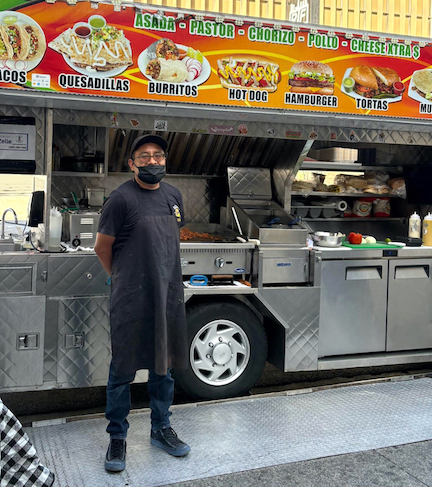
Miguel and his food truck, Yekor’s Catering (Photo: Athena Mari Asklipiadis)
Miguel also expressed how he was alarmed and knew deportations were increasing when he heard of another food truck worker being detained by ICE two months ago. Local restaurants like Miguel’s are the collateral damage of the tension and raids happening throughout the city.
Some street vendors have been targeted by raids, creating fear but also bringing forth support from community members who want to protect them. The complex issue of immigration is something on everyone’s mind, but most cannot deny our city and country’s dependance on immigration labor.
Tenorio, who is a Mexican American born in Los Angeles, speaks with a lot of passion, sharing that the raids and protests are all too personal. With one parent who is naturalized and one parent who remains undocumented, her thoughts are layered.
“I don’t believe in either extreme of fully closed or fully open borders. There needs to be a clear pathway to citizenship for those who come to this country seeking to work hard and contribute to their communities,” she said.
“What’s enraging about these ICE raids is that they’re targeting people who are literally AT WORK,” Tenorio continued. “We all benefit from immigrant labor. Whether it’s the produce on our shelves, the homes we live in or the gardener that we utilize for our lawns at a lower price than any major landscaping business could offer. This labor stays ‘affordable’ because immigrants, many of whom are undocumented, are paid less. People often argue that immigrants are ‘taking American jobs,’ but many of these jobs are left vacant when immigrant labor isn’t available. When Americans don’t want the jobs, immigrants do them, and they do them well.”
Perez, too, also felt strongly about the many industries that rely on undocumented workers. As someone who works in the construction field, he has seen the fear in his coworkers first-hand. Half or more of his co-workers, who are in the process of building a large chain hotel, have been absent, too afraid to leave home.
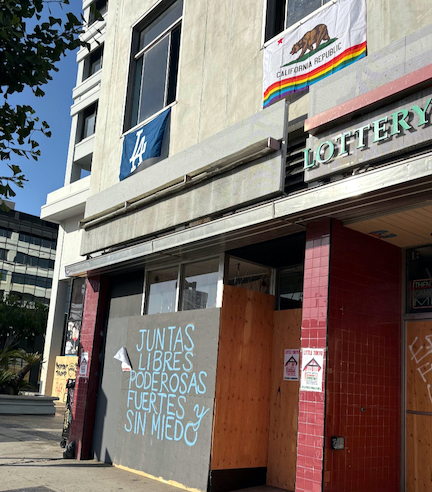
Boarded up businesses in Little Tokyo, with one containing the message: “Juantas libres, poderosas, fuertes y sin miedo.” Translated, it means: “Together we are free, powerful, strong and without fear.”
Photos: Athena Mari Asklipiadis
As a result, this not only impacts families who depend on the income but also pushes the date of the company’s build completion further out. Perez shared that they estimate being weeks behind due to workers not showing up to work. One of his coworkers, a green card holder, was detained on June 11.
Due to the fear of retaliation, Perez’s coworker is afraid to share his name and too many details of his story, but he did recount the horrible process at the detainment center. He shared with his coworkers that they were packed in like sardines, and there wasn’t enough room to lay down to sleep, so they had to organize amongst themselves shifts between who stood and who laid down to rest. He was also not provided calls or a shower during those days he was detained, and it was very unsanitary with no way to properly use the restroom. He was also only given minimal food, consisting of peanut butter sandwiches. All of the men there waited for their fate as their name was called. He felt lucky, as most left behind are likely to remain for some time in those conditions, away from family. They will likely face deportation.
Despite the recent raids mostly affecting undocumented Latinos, immigrants from other countries are also living in fear. “Protest for me!” another immigrant, wishing to remain anonymous, asked friends on social media. Being a noncitizen from Japan has made her apprehensive and too scared to protest.
“Even though I’m a green card holder, being a foreigner, I didn’t feel comfortable protesting in a large crowd,” she said. “It’s very sad to see how some people don’t see how inhumane and unlawful the treatment of people is by ICE and the current administration. Such hypocrites. They don’t see how different this is from the people who were charged and arrested for their involvement in the Jan. 6 Capitol attack. Even they got due process . . . convicted . . . and then later released by executive order.”
When asked to share her overall feelings about the past two weeks, Tenorio summed it up best with actionable ways individuals can make a difference: “The community needs you. Support can look like buying from Latino-owned businesses or protecting vulnerable neighborhoods like Little Tokyo. Many businesses are struggling and not just from fear of raids but from fear of looting and declining sales. If nothing else, remember that where you spend your money is a protest. Pull your dollars from businesses that don’t align with what you believe in. Invest in the places that do. Protect Little Tokyo. Protect Los Angeles. Protect each other. . . . This isn’t just a Latino issue. It’s an American one.”
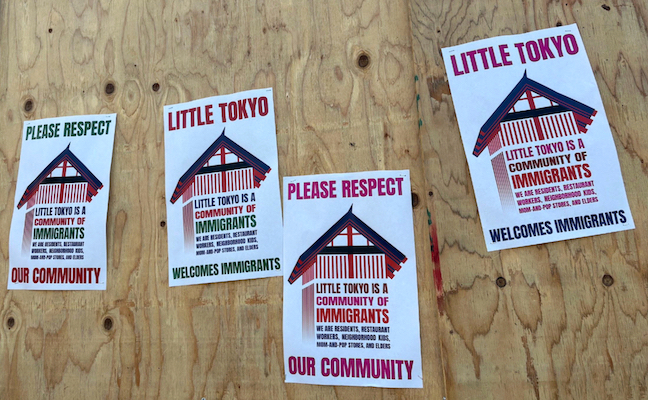
EDITOR’S NOTE: In a statement to the Pacific Citizen, JANM Board of Trustees Chair William Fujioka said, “I am relieved to report that JANM’s staff and volunteers are safe, as are our important collections. Unfortunately, the exterior of our Pavilion was defaced with significant graffiti. We know that the tagging does not represent the majority of those making their voices heard. Little Tokyo is a strong and resilient community. I spent much of [June 10] with a group of local volunteers — many of them protestors themselves — who came out to help clean up the graffiti. It was definitely time to scrub something! I am very grateful for their efforts and for recognizing the role this museum plays in the community. JANM is and always will be a voice for social justice. We continue to stand with our immigrant communities and with those who exercise their constitutional rights to peaceful protest. Peaceful protest can lead to positive change for everyone. Thank you for your membership and for continuing to support our important mission.”
Athena Mari Asklipiadis, a hapa Japanese L.A. native, is the founder of Mixed Marrow, a filmmaker and a diversity advocate.




